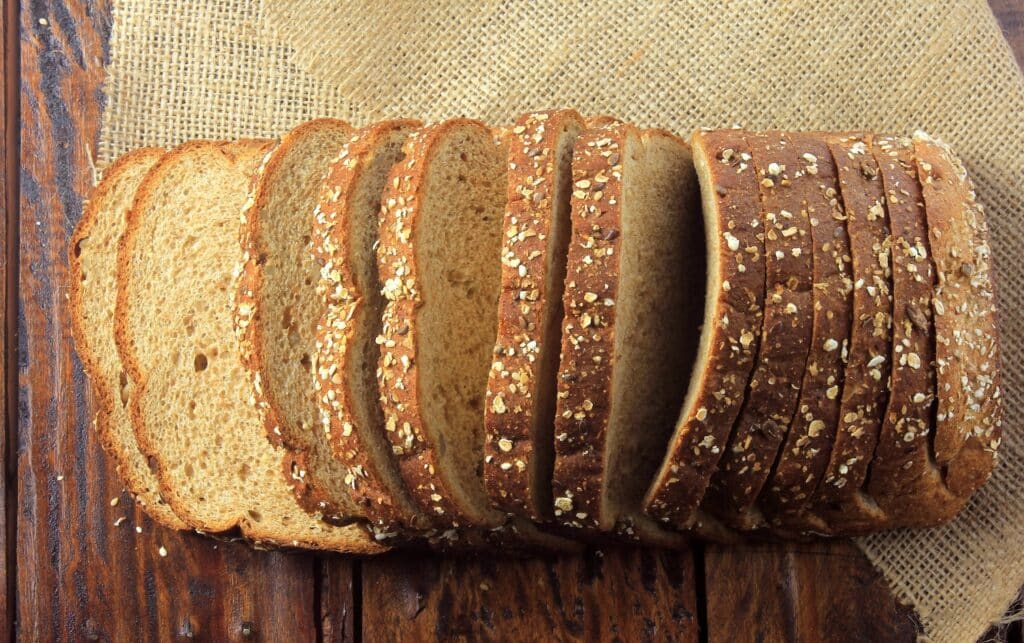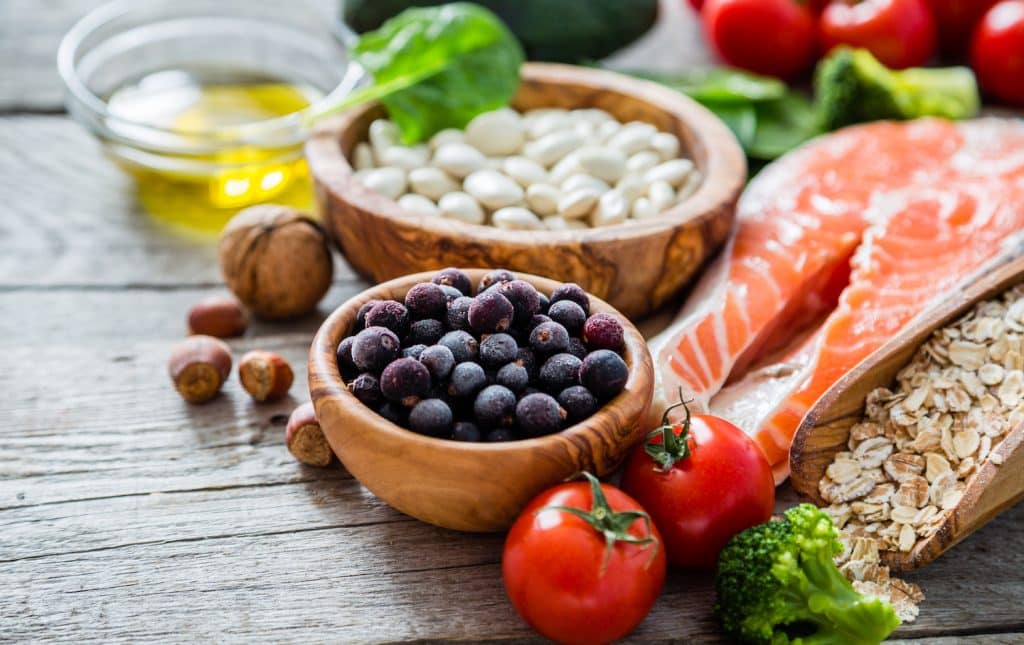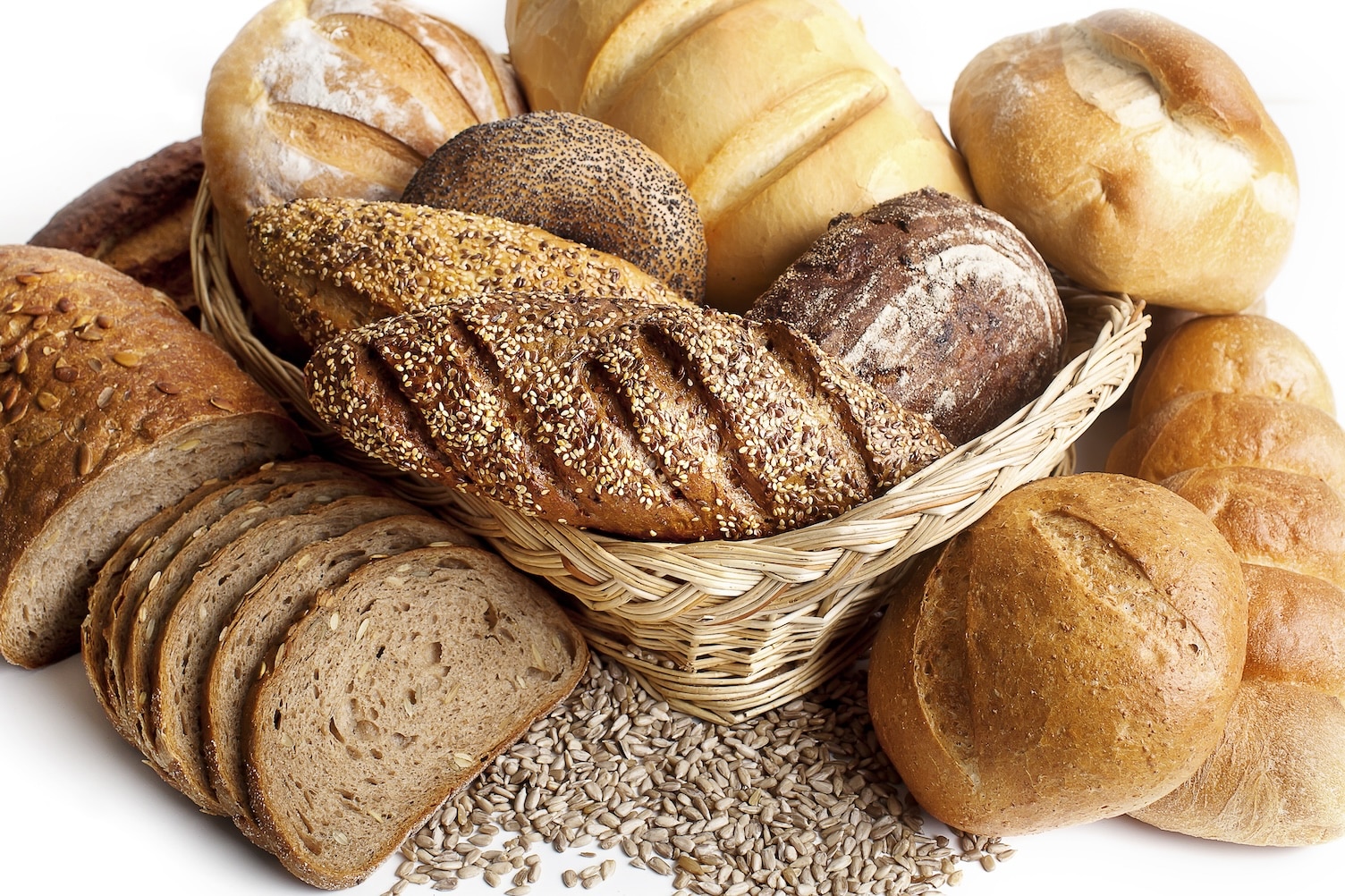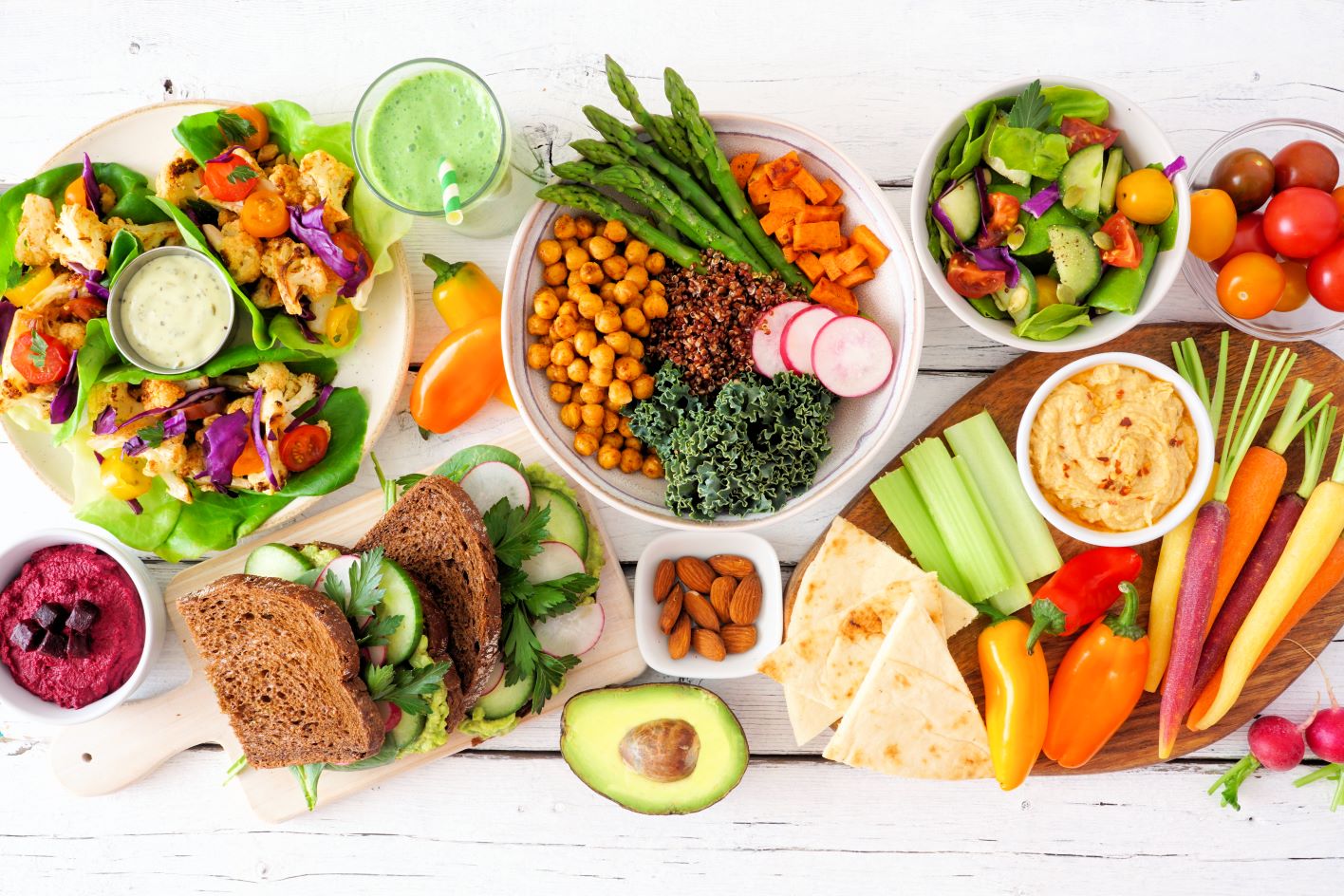It’s not always easy to find the healthiest bread to eat, especially when determining the better option between sprouted wheat vs. whole grain.
According to registered dietitian Brookell White, MS, RD , “At least half of your grains should be whole grains. And the more whole grains, the better! They provide a whole host of nutrients which can lead to a healthier you. Unfortunately, all loaves are not created equal.”
Learning more about the differences between sprouted wheat, whole wheat, and whole grain can help, though.
The way grains are processed and the types of flours used in the final product can make a big difference!
How Can You Choose the Healthiest Bread?
When you search for the healthiest bread, you might think you just need to look for regular flour (white, unbleached) and bake a loaf.
Or, you might think it’s time to cut out bread altogether. However, some breads provide excellent nutrition and there are many great options to choose from!
Plenty of healthy loaves are out there, but conventional breads aren’t all made equal.
Some things to consider are the nutrient content, (including fiber), the ingredients, and whether the grains used are 100% whole grains or not. Or, you can opt for sprouted whole-grain bread with even more nutritional benefits!
Registered Dietitian Brookell White says, “The more nutrient-dense, the better. And the most important predictor of a nutrient-dense bread is if the grain used is whole and in what quantity.”
Whole grain breads are made with the whole wheat kernel, including the fiber-rich germ and bran, so the bread retains all the nutrients in the seed. A whole grain should be listed as the first ingredient.
“Sprouted whole grains add additional benefits because the seed begins to grow (aka sprout) and enzymes are activated breaking down components making them easier for us to digest,” says White.

You might also like
Is Modern Wheat Bad For You? What to Know >
Sprouted Wheat Bread: What You Need To Know
Sprouted wheat is whole wheat bread (includes all components of the wheat kernel) that has sprouted according to the Oldways Whole Grains Council.
There is no official definition, though the “Cereals and Grains Associations” definition adds that the sprouted portion cannot be longer than the grain kernel and nutrients cannot be diminished. When wheat bread meets these specifications, it can be called a malted or sprouted whole grain.
How Is This Type of Bread Made?
According to the Oldways Whole Grains Council, creating sprouted grains is a delicate process requiring a specific amount of moisture, time, and heat.
It’s necessary to stop the germination process at the right time before the key nutrients within the wheat begin to deteriorate or the plant ferments.
There are two approaches to making sprouted wheat.
- The dry method: With the dry approach, the grains are sprouted and then set out to dry. At that stage, they can be milled into flour or cooked as-is.
- The wet method: The wet method is a good way to grow sprouted grains for “flourless” products such as muffins or tortillas. While wet, the sprouted grains are crushed and mashed into a puree. That puree is then used to create the products mentioned above. The wet method is also most likely to be used for frozen products.
What Are the Health Benefits of Sprouted Wheat Bread?
Sprouted grain breads have more bioavailable nutrients than others due to the addition of the sprouting process.
When the grain sprouts, enzymes are activated to break down proteins and carbohydrates in the kernel. This process makes these nutrients easier to absorb into our digestive tracts.
This includes the digestion of the protein gluten. This makes sprouted grains more tolerable for some individuals with non-celiac gluten sensitivity.
Another awesome benefit is that sprouting grain is thought to reduce the content of phytates in the flour.
Phytates are compounds known to bind some nutrients, such as the mineral phosphorus, among others.
This binding process makes it so bound nutrients won’t be used by our bodies. So, fewer phytates means more minerals!
Sprouted-Grain Breads You Should Try
There are many different sprouted bread brands. Try a few until you find the one that’s right for you!
Popular sprouted-grain breads include:
- Ezekiel 4:9 Original Sprouted Bread
- Dave’s Killer Bread Sprouted Whole Grains
- Alvarado St. Bakery Seriously Sprouted Bread
Whole-Wheat or Whole-Grain Bread: What You Should Know
100% whole-wheat bread is a single kind of whole-grain bread. It is made with fully intact wheat berries which include the endosperm, germ, and bran in their original proportions.
On the other hand, whole-grain bread can be made with any whole grain, such as oats, barley, bulgur, farro, rye, spelt, or any other. It also has to contain the whole intact kernel…
For breads that are entirely made up of whole grains (wheat or otherwise) look for 100% whole-wheat or 100% whole-grain.
This signifies that the bread only contains flour with the intact grain kernel. If it does not have 100% on the packaging this may mean your bread isn’t entirely made from whole-grain flour.
You can look at the ingredients or look for the Whole Grain Stamp to help identify how much of the bread flour is whole.
Looking at the first ingredient is a good indicator that bread contains mostly whole grains. Look for “whole grain” or “whole wheat”.
How Are Whole-Grain Breads Made?
Whole-grain and whole-wheat breads are made by first harvesting and then milling the whole grain into flour.
Whole-grain bread flour may include one or multiple grains. Then, water, salt, and yeast are added to the flour.
Kneading the bread and then letting it rise before baking are typical steps though there are many variations in these steps used to make bread.
If you’re unsure if you’ll like whole-grain bread, try whole-grain toast with a topper (such as avocado or nut butter) or use whole-grain flours that contain seeds and oats for extra flavor.
As with other kinds of bread, whole wheat bread calories will vary based on the ingredients and the bread slice’s size.

You might also like
Macronutrients vs. Micronutrients: How Are They Different? >
What Are the Nutritional Benefits of This Type of Bread?
Without seeing the nutrition label, there’s no way to give an exact breakdown of the essential nutrients in your loaf of bread.
Still, 100% whole-grain flour is rich in many nutrients. Refining the bread, which removes portions of the grain, will result in fewer nutrients.
According to the Whole Grains Council, refining a grain can lead to the removal of half to two-thirds of the nutrients found in unrefined or whole-grain flour.
So, be sure to look for 100% whole-wheat or 100% whole grains to get all the benefits from your breads!
The nutritional content of whole-wheat flour (per 100 grams) includes 13 grams of protein, 72 grams of carbohydrates, 0.5 grams of sugar, 11 grams of fiber, and other vital nutrients such as:
- B vitamins Thiamine, Riboflavin, Folate and Niacin
- Vitamin E
- Iron
- Potassium
- Magnesium
Whole or Sprouted-Grain Breads You Should Try
Ready to try some whole-wheat bread? The grains in bread can add a healthy boost to your meal.
Use the Whole Grain Councils site to find 100% whole grain and wheat bread by filtering for 100% Stamp.
The Bottom Line
The next time you head to the grocery store, consider looking for sprouted whole wheat, 100% whole wheat, or 100% whole-grain bread to help you get the nutrients you need daily.
While they taste a little different from white bread, you’ll see an improvement in your macros on the MyFitnessPal app when you make this small change!
In the end, sprouted whole wheat is one of the best breads for your health due to its nutritional content. However, both 100% whole wheat and 100% whole grain are dense in nutrients and are both great options for your health.
Originally posted 9/3/2018 \ Updated 6/6/2024





